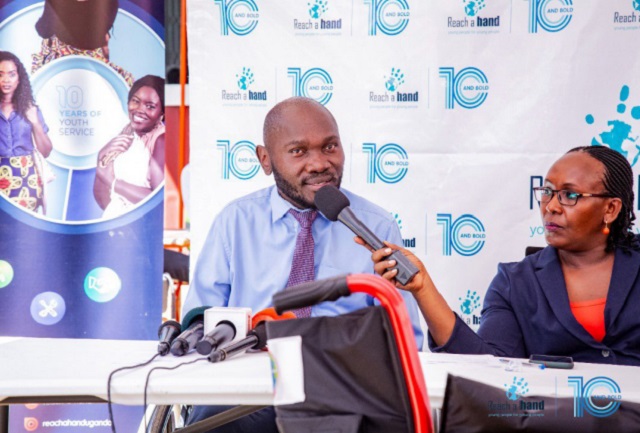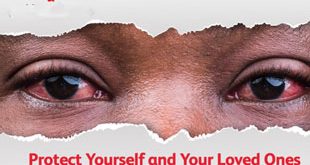
With effective emergency response, they shouldn’t be a death sentence
Kampala, Uganda | PATRICIA AKANKWATSA | Gloria Tumusiime is a 35-year-old mother of one who lives in Kireka. She has had spinal cord injury for close to three years now. She was knocked by a car in June 2019 at the Northern bypass.
“I was on a Boda Boda from dropping off my kid at school when a car came out of nowhere and knocked us.
“I was rushed to Mulago where they broke the news to me that I had broken my spine and they had to put metals to support my back but I would never be able to sit or walk again,” She narrates.
I met Tumusiime at Reach A Hand Uganda where she had gone to pick up a wheelchair on May 10th.
She is one of the 200 beneficiaries of a campaign by Reach A Hand in partnership with Spinal Cord Injuries Support Society, OJ Disability Foundation, and Light for the world which aims to raise awareness about spinal cord injuries, their prevention and treatment, as well as advocate for better services for people with disabilities in Uganda.
Denis Ouma the chairperson of the Spinal cord injuries support society says that one of the challenges of having a spinal cord injury is that care systems are frequently inadequate and access to high-quality rehabilitation and assistive devices is unavailable.
He also says that health care is lacking, which means that a person with spinal cord injury is likely to die within a few years from urinary tract infections or pressure sores, stress, and stigma.
“Even when individuals are lucky enough to receive the health and rehabilitation care they require, they are likely to be denied access to the education and employment which could enable them to regain their independence and make a contribution to their families and their society,”
“A spinal cord injury shouldn’t be a death sentence. But this requires an effective emergency response and proper rehabilitation services, which are currently not available,” Ouma says.
He says in cases of spinal injury, once survival of the patient has been assured; then the next step is to promote the human rights of person. This should happen alongside other persons with disabilities.
“All this is as much about awareness as it is about resources,” he says.
Woman MP representing persons with disabilities, Laura Kanusu says that spinal cord injury is preventable, survivable, and needs not prevent a good quality of life and full contribution to society.
“We can turn spinal cord injury from a threat into an opportunity by enabling health systems to react effectively to the challenge of spinal cord injury so that they can respond better to many other types of illness and injury.
“Also, a world which is hospitable to people with spinal cord injury, in particular, will inevitably be more inclusive of disabilities in general, improved accessibility and greater availability of assistive devices will help many disabled and older, people,” she says.
Spinal cord injury refers to damage to the spinal cord, the long, tube-like band of tissue that connects your brain to your lower back and carries nerve signals from your brain to your body and vice versa. Spinal cord injury could result from physical as in an accident, or disease and degeneration such as from cancer.
Spinal cord injury means there is damage to the bones called vertebrae that make up the backbone, the bundles of nerve fibres called ligaments that connect bone to bone, or disks of the spinal column.
Dr Mallon Nyati an Orthopedic Spine Surgeon at Mulago hospital says that a spinal cord injury can stem from a sudden, traumatic blow to your spine that fractures, dislocates, crushes or compresses one or more of your vertebrae. It can also result from a gunshot or knife wound that penetrates and cuts your spinal cord.
“Additional damage usually occurs over days or weeks because of bleeding, swelling, inflammation and fluid accumulation in and around your spinal cord,” he says.
“A nontraumatic spinal cord injury can be caused by arthritis, cancer, inflammation, infections or disk degeneration of the spine,” he adds.
He also says that there are two kinds of spinal cord injuries which include a complete and an incomplete injury.
“A complete injury causes total paralysis (loss of function) below the level of the injury. It affects both sides of the body. A complete injury may cause paralysis of all four limbs (quadriplegia) or the lower half of the body (paraplegia),”
“After an incomplete injury, some function remains on one or both sides of the body. The body and brain can still communicate along certain pathways,”
There is no reliable estimate of global prevalence, but the estimated annual global incidence is 40 to 80 cases per million population. In Uganda, the prevalence is at 8.8%.
Causes
The leading causes of spinal cord injury are road traffic crashes, falls and violence. A significant proportion of traumatic spinal cord injuries is due to work or sports-related injuries.
In Uganda, transport injuries typically involve head-on and roll-over crashes due to excessive speed, lax securing of unstable loads, very limited use of protective helmets and vulnerability of pedestrians to being struck when crossing busy or unlit roads.
According to the Uganda Police website, from February 28 to March 6, police registered 414 crashes. Of these, 75 accidents were fatal, 226 were serious and 113 were minor. There were 404 crash victims, out of which 89 people died and 315 sustained injuries.
The portal also states that from April 24 2022 to April 30 2022, police registered 387 crashes, out of which 60 were fatal, 213 were serious and 114 were minor.
There were 341 crash victims, out of which 67 died and 274 sustained injuries. A total of 119 crashes occurred on May 1 2022 and May 2 2022 and out of these, 21 crashes were fatal, 62 were serious and 36 were minor.
Improving care
Ouma says that before talking about care for people living with spinal cord injuries, there should be effective interventions to prevent several of the main causes of spinal cord injury, including improvements in roads, vehicles and people’s behaviour on the roads to avoid road traffic crashes.
He says that to improve care, health and social care organisations should offer appropriate spine cord injury health care, with a coordinated multidisciplinary approach that includes people with spinal cord injuries and their family members.
He also says that health providers should empower people with spinal cord injuries and their family members so that they can look after their health to the greatest extent possible.
He, however, says that improving care for people with spinal cord injuries should not be about the health and service providers only but also the victims and their families and this can be done by educating themselves about spinal cord injuries health maintenance issues; as well as participating in peer support and self-help programmes.
They can also contribute to community education and awareness activities; avail of opportunities to make an early return to education and employment and where appropriate, consider re-training and developing self-employment activities to improve livelihood opportunities.
****
 The Independent Uganda: You get the Truth we Pay the Price
The Independent Uganda: You get the Truth we Pay the Price



for the love of God, when the hell will they get me walking again? I’m slowly dying, and the spinal cord injury researchers are doing nothing to help people in my condition. I’ll die first before a solution to my condition is found.